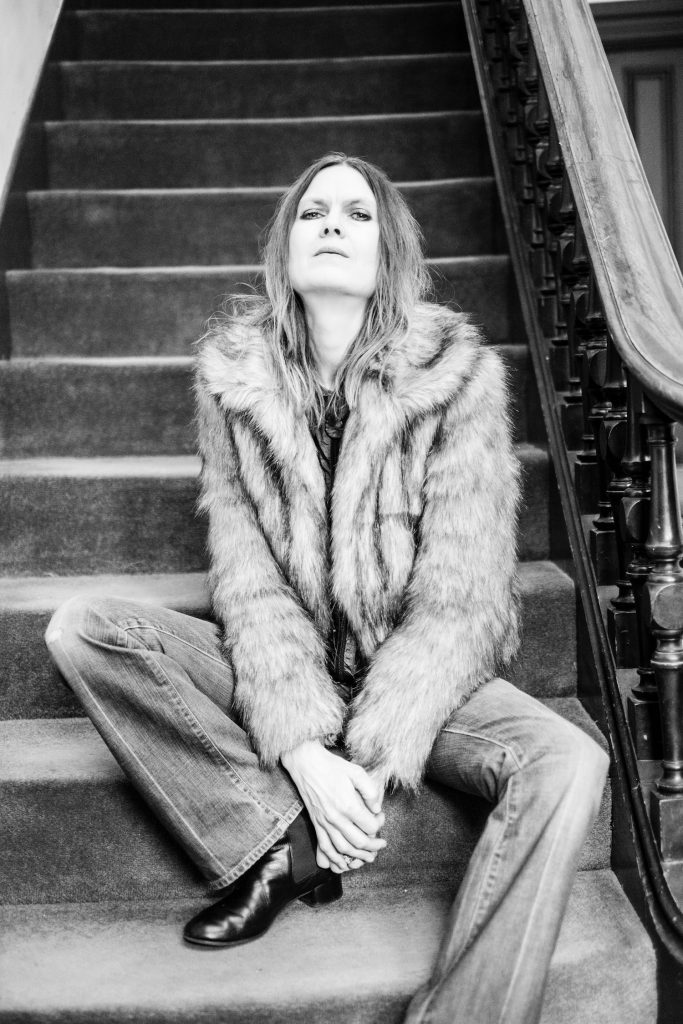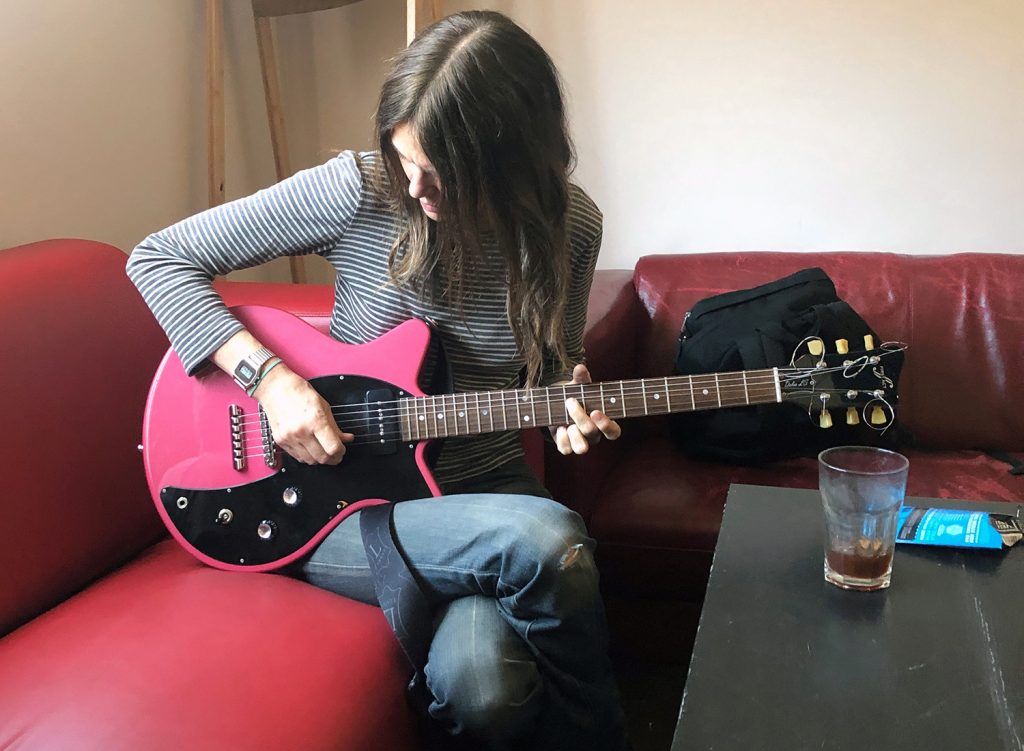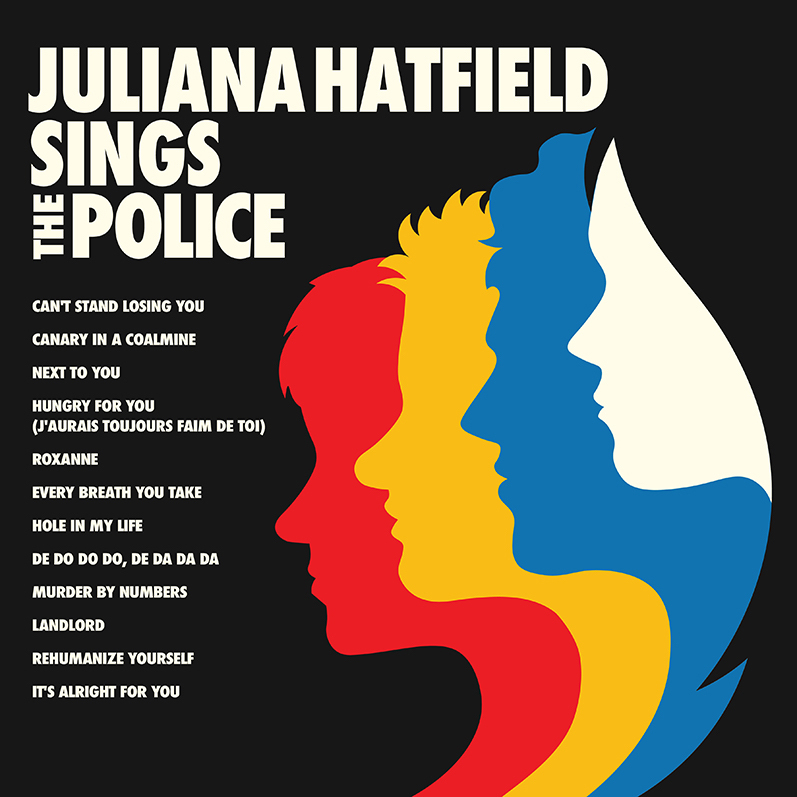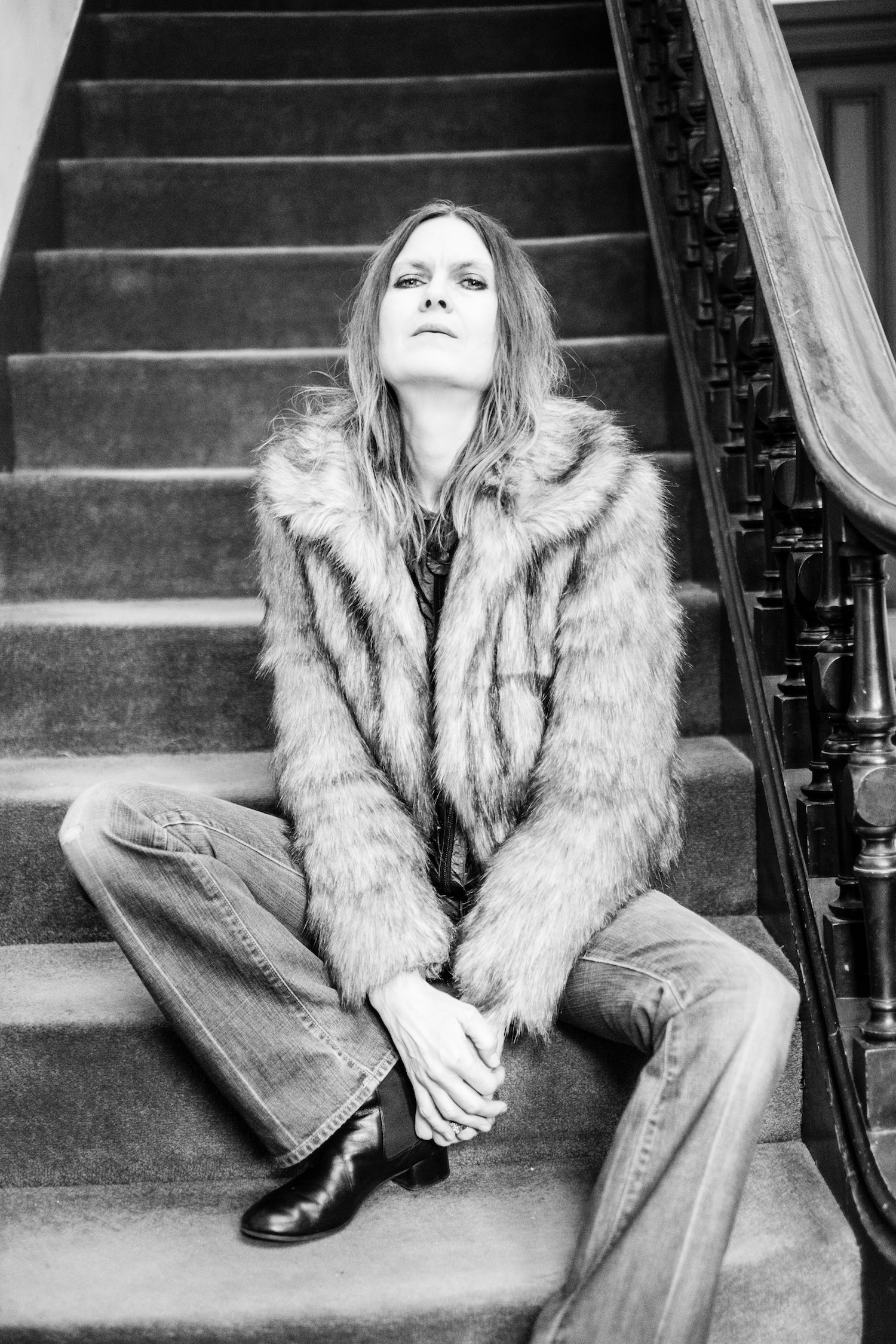
Following up on last year’s Juliana Hatfield Sings Olivia Newton-John, the songstress has another album’s worth of cover tunes on offer with Juliana Hatfield Sings The Police (American Laundromat). Like rebuilding an old, beloved Ford, Juliana Hatfield has stripped the songs down to their chassis and then added her own parts to create something new. Sure, it’s a bit wild and wacky, but very charming and tons of fun!
First off, I really enjoyed your interpretations. Covering the Police seems a bold choice and a wonderfully quixotic thing to do. When you do an entire album of cover versions, there’s the risk of it coming off as an exercise in nostalgia, but you’ve managed to sidestep that by, as you’ve said, deconstructing the songs and then reassembling them. You’ve also said The Police were an important band to you during your formative years. In what way?
“Quixotic” is my jam! But, seriously, I loved Sting’s unique, original voice, and it helped inspire me to develop and believe in my own unique, original songs and voice. Also, the band was a bonding agent between me and certain friends in high school—our mutual love for the Police kept us close and gave us all something we could be excited about.
Your song choices span all five Police albums fairly evenly with a slight tilt to Outlandos d’Amour. I was hoping for “Walking On The Moon,” but you did “It’s Alright For You,” which always seemed to me to be the lost Police hit. Do you have a favorite album? The Jungian explorations of Synchronicity seem worlds away from their debut.
I think it was around the time of Synchronicity when I first fell in love with the Police. I was a little too young to have appreciated the earlier, more raw records when they were first released. But I came to love the first three albums (1978’s Outlandos, 1979’s Reggatta De Blanc and 1980’s Zenyatta Mondatta) the most. Synchronicity seems, now, to me, a little pretentious and overwrought; too conceptual for my taste, and too many words and too many high-falutin’, book-learnt ideas fighting for attention.
You stay fairly close to the original arrangement on tunes like “Canary In A Coalmine” and “De Do Do Do De Da Da Da,” but you slowed down the amphetamine rush of “Next To You” and gave “Murder By Numbers” a punkish flavor. In a way, the former reminded me of David Bowie’s version of the Who’s “I Can’t Explain.” What was behind some of these choices?
I just followed my intuition; songs sort of tell me what they want me to do to/with them. I don’t often have much of a set plan before I start working. I just start playing and see what happens. The idea for “Murder By Numbers”—to do it fast and hard and punkish—hit me all at once at one point, like a light bulb coming on over my head, and it just suddenly seemed so obvious to do it that way.

Sting has commented that the surface prettiness of “Every Breath You Take” lulls some people into missing the sinister nature of the lyrics. As a singer how do you approach songs with such strong narratives? I’d throw “Roxanne” into that as well.
I know these songs and the melodies so well that I almost don’t even think about the lyrics because they are like second nature to me. Especially when I am singing; singing is such a physical act for me. I rarely think about the words I am singing. It’s just trying to push the notes out. But when I listen, I am drawn to things that have a darkness, have more than one layer of meaning. I get bored by love songs, I don’t relate to them. If “Every Breath You Take” were a straight-up “I love you forever, baby” song, it would bore me.
Do you think the mostly digital distribution system of today’s music industry better lends itself to projects like this?
I don’t know. I’ve never thought about it. I don’t think about it. I make albums as albums. I think about how all the tracks will fit together and how they will flow, one after the other, in sequence. I realize that hardly anyone probably sees music albums that way anymore, but that’s how I think about it.
The Police’s reggae styling’s translated surprisingly well to the drum machines you use on some tracks. They are such distinctive players, but you steered clear of Andy Summer’s guitar tone and Stewart Copeland’s clicky hi-hat work and instead added dollops of fuzz on some songs. Was there any part of their sonic palette you looked to incorporate?
I used some of their tricks, like some chorus effect on some of the guitars—using a Roland Jazz Chorus amp, which I never use—and I played some parts with the rhythm guitar hitting on the upbeats—reggae-style, kinda—but other than that, I went my own way and made the songs mine so that it would feel natural and comfortable for me rather than mere mimicry.
Last question. You’ve indicated you may do more projects like this. Which artists are you considering? I nominate Duran Duran.
I have covered an Australian (Olivia Newton-John) and an English band (Police). so I think next I want to cover an American band. I am thinking about which one. I have it narrowed down. But Duran Duran is a great idea!
—Bruce Fagerstrom








